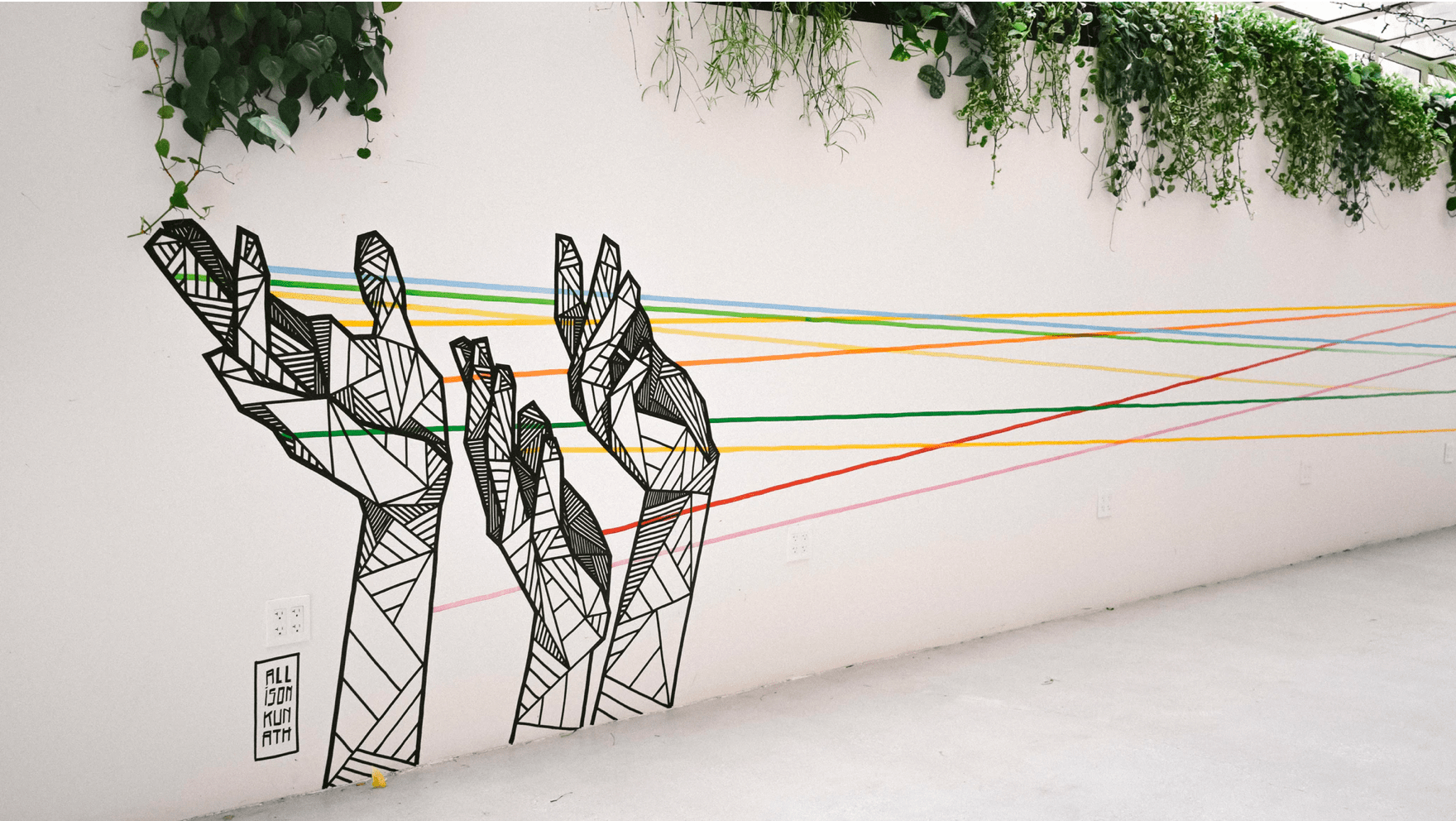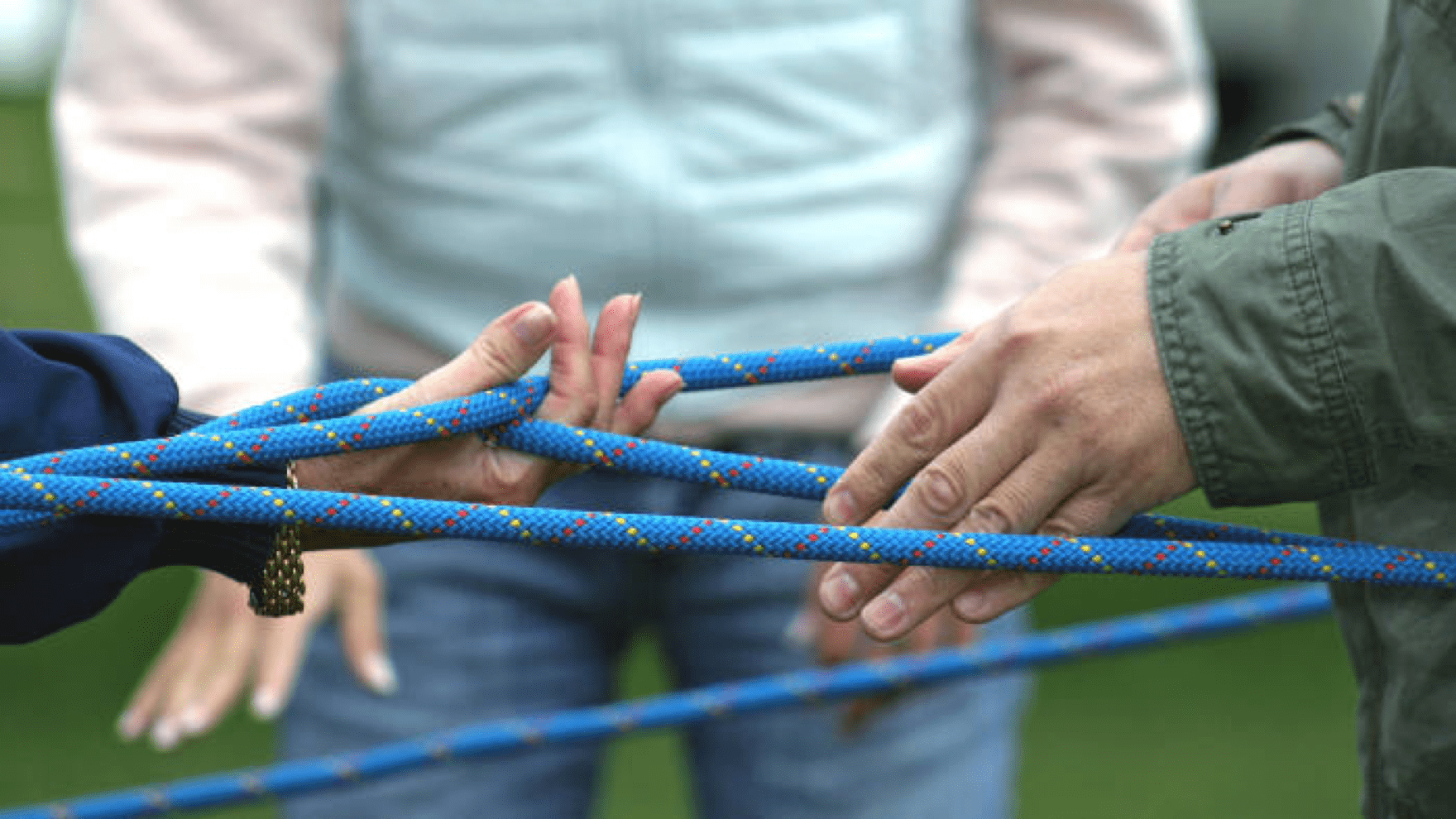To work effectively as a team, you need to learn how to overcome obstacles your team encounters.
And while you may find that team-building games can help build cohesion and communication in your team, you’ll also find that problem solving skills are equally as important in leveling up your team’s ability to achieve goals, address issues, and succeed together.
Teams must learn to observe problems critically and find all the possible ways around them, rather than getting stuck in the details or making excuses.
Great businesses have to solve both their customer’s problems and their own internal issues on a regular basis.
Problem solving has been linked to company performance.
Good problem solving skills lead to better decision making, which can improve performance and lead to company growth.
Teams and leaders who can learn how to solve problems in an orderly, planned fashion tend to perform better than those who cannot.
Luckily, the problem solving process is a learnable skill.
While some people are naturally better at it than others, everyone can learn the process of solving problems by thinking critically.
One very effective method for teaching this skill is through problem solving group activities.
How do problem-solving games work?
Problem solving games help teams break a problem down into five5 distinct stages:
- Find
- Define
- Describe
- Diagnose
- Test
Going through this problem solving process helps a team learn basic strategies they can then apply to real-world problems.
By gamifying the process, you’re allowing teams to work out the concepts and apply appropriate strategies in a controlled environment.
The benefits of problem-solving icebreakers for adults
Firstly, problem-solving icebreakers serve as effective introductions.
They’re much more engaging than simply listening to everyone in the group stating their names, and help avoid the awkward “think of an interesting fact about yourself”, too.
When done well, icebreakers are a fun start to any group session, and get everyone ready to start collaborating and networking.
As a non-threatening environment, icebreaker sessions promote lighthearted conversations and laughter—helping alleviate any tensions within the group.
This casual start to problem-solving group activities is a great way to introduce any formal learning sessions and puts everyone in a positive frame of mind.
Other benefits of problem-solving group activities are that they enable participants to share their own thoughts and expectations for sessions.
Implementing a well thought out icebreaker will garner more engagement from participants, as they feel like active players—rather than just listening in.
You’ll often find that icebreakers, like team building exercises, can help break up any existing cliques within groups and encourage participants to engage with people they might otherwise not interact with.
This is a good way to help build effective work relationships for the future.
10 problem-solving activities for employees
With these benefits in mind, let’s take a look at 10 team building activities to try with your employees.
All of these activities promote quick problem solving, critical thinking, trust, and a positive culture within groups.
Plus, as they’re quite simple activities, you can try them anywhere with minimal equipment.
1. Human knots

This is a simple activity you can do with any team.
It teaches communication and clear thinking in the face of a complex, frustrating problem.
There will likely be a number of solutions proposed by different members of the team, and each will need to be evaluated and implemented by the whole group.
Helps with: Communication skills, collaboration.
Time: 10 – 15 minutes.
What you need: Nothing (other than a small team of people).
Instructions:
- Have your team stand in a small circle (form multiple circles if you’re a larger group). Each person should hold the hands of two2 other people in the circle that are not standing directly beside them. This should create a messy knot of cross-crossed arms.
- Instruct your team to untangle themselves without releasing hands at any point. They may not be able to fully disentangle to form a circle again, but by the end of the activity time, they should have started working together to solve the problem.
2. Frostbite

Oh no! Your team is stranded in the barren Siberian wastelands and a sudden winter storm is approaching.
Using only the materials on hand, you need to build a structure that will withstand the harsh winds of the storm.
Unfortunately, the leader of your expedition has been struck with frostbite in both hands, and all the others are suffering from severe snow blindness.
Helps with: Leadership, trust, decision-making, adaptability.
Time: 30 minutes.
What you need: Blindfolds, an electric fan, and simple building materials such as card stock or cardboard paper, toothpicks, rubber bands, straws, masking tape, sticky notes, etc.
Instructions:
- Split into small groups of 4 – 5 people. Each group should elect a leader.
- Team leaders are not allowed to use their hands in any way to help the group, and group members must be blindfolded during the exercise.
- Teams have 30 minutes to construct a small tent structure that can withstand the wind from the highest setting on the fan.
3. Dumbest idea first

Thinking outside the box can stimulate your creativity and lead you to solutions that would normally sound too crazy to work.
By looking at these crazy solutions first, you can expand your options and discover the possible solutions that might not be as obvious.
Helps with: Creative problem solving, critical thinking, quick problem solving.
Time: 15 – 20 minutes.
What you need: Piece of paper, pen or pencil.
Instructions:
- Present a problem to your team. This could be a real-world problem that project management is actually facing, or it could be a made-up scenario. Example: Your company is trying to beat a competitor to secure a contract renewal with a high-paying client, but the client is leaning towards your competitors. You have a short time to change their minds before they make the official decision.
- With the problem presented, instruct your team to come up with the dumbest ideas they can think of to address the problem. Write them all down.
- Once each person has presented a few ideas, go through the list and evaluate each idea to see which ones are the most viable. List them down from the most likely to work to the least likely.
This is a particularly great problem-solving exercise for remote teams, as you can easily organize it via video conferencing with a whiteboard app for brainstorming.
4. Wool web

As difficult as it is to replicate the complexity of real-world problems, that’s no reason not to try!
Wool web creates a problem that seems impossible in the beginning, but with the right direction and working together, teams can learn to break down impossible situations into solvable problems one step at a time.
Helps with: Communication, leadership.
Time: 30 minutes.
What you need: A few small balls of yarn.
Instructions:
- Divide the group into teams of equal size. Each team gets a ball of yarn.
- Instruct each team to make a large web from the yarn ball. Give them 5 – 10 minutes to do so. Once they’re done, rotate all the teams so that each team is at a yarn web they did not build.
- Each team should select one person to unwind the web. This person will be blindfolded, and the rest of the team should direct them on how to unwind the web through verbal instructions only. The first team to do it wins the game.
5. Tallest tower

One the classic group problem-solving activities, simple construction projects can help teams develop strategies to overcome out of the box problems.
Using only two materials, teams will compete to make the tallest marshmallow spaghetti tower in a set amount of time.
Helps with: Collaboration, creative thinking.
Time: 30 minutes.
What you need: One pack uncooked spaghetti noodles, one bag of marshmallows.
Instructions:
- Divide your group into two equal teams. Give each team 20 – 30 uncooked spaghetti noodles and 3 – 4 marshmallows.
- In the given time, teams will compete to create the tallest tower using only the materials provided. A marshmallow must be placed at the top of the tower.
6. Spider web

A crafty spider has trapped your group in its lair.
To escape, you must pass through its web to get to the other side safely.
Each member of the team must pass through the web without touching it, but each hole in the web is only accessible once.
Helps with: Resource management, critical thinking, collaboration.
Time: 30 – 40 minutes.
What you need: One long ball of yarn, strong tape, scissors.
Instructions:
- Create a large web between two stationary objects (walls, trees, desks, etc.). The web should have 2 – 3 more holes than the number of people in the group, and holes should be of varying sizes with some being simple to pass through and others more difficult. Position your team on one1 side of the web.
- The goal is for them to go through the holes in the web without touching it. Each team member can only get to the other side through the web, not by going around the web.
- Instruct your team to pass through the web one at a time, with each hole being closed as it’s used. The activity is over once the entire team is through to the other side.
7. Shrinking vessel

Your whole team is stuck within a slowly shrinking vessel.
It’s up to them to figure out how to stay inside the given space as it gradually closes in.
Helps with: Adaptability, quick thinking, collaboration.
Time: 10 minutes.
What you need: A rope, ball of yarn, or similarly thick string.
Instructions:
- Put a large circle of rope on the floor. Position your entire team within the circle.
- Slowly reduce the size of the circle. Instruct your team to work together to keep the whole team within the circle as it gets smaller. No one should step outside the circle. See how small you can make the space before they’re unable to stay inside.
8. Minefield
The concept of this one is simple: The team has arrived on a battlefield laid with mines.
One person at a time must attempt to cross the battlefield without stepping on one.
Once a team member steps on a mine, they must return back to the start.
Helps with: Communication.
Time: 60 minutes.
What you need: An empty room or hallway, blindfolds, and a collection of common office items.
Instructions:
- Place the items (chairs, boxes, water bottles, bags, etc.) around the room so there’s no obvious path from one end of the room to the other.
- Split your team into pairs and blindfold one person on the team.
- The other must verbally guide that person from one end of the room to the other, avoiding the “mines” (The partner who is not blindfolded can’t touch the other).
To make Minefield more challenging, set it up so that all the pairs go simultaneously—teams must find ways to strategically communicate with each other.
9. Egg drop
While this one does involve a little bit of equipment (and potential mess), it’s great for helping your team practice making choices quickly.
Train your team’s decision-making muscles to help them become more adept at problem solving.
Helps with: Collaboration, decision-making.
Time: 20-30 minutes.
What you need: A carton of eggs, basic construction materials such as newspapers, straws, tape, plastic wrap, balloons, rubber bands, etc. You’ll also need an outside space where it doesn’t matter if you get messy!
Instructions:
- Give each team an egg and ask them to select from the construction materials.
- Allow 20-30 minutes to construct a carrier for the egg and protect it from breaking.
- Drop each egg carrier off a ledge to see whose carrier protects the egg from breaking.
- If multiple eggs make it, keep increasing the height until only one egg is left.
10. Stranded
If you think your team might have communication problems, Stranded can be a great way to spot them.
It’s easy to see who’s a strong leader, who’s happy to just go along with things, and who’s most likely to butt heads.
You can even intervene during the icebreaker to smooth out these problems, hopefully laying the groundwork for better communication in the future.
Helps with: Communication, decision-making.
Time: 30 minutes.
What you need: An office and your team.
Setting:
Your team is stranded in the office. The doors are locked, and knocking down the doors or breaking the windows is not a possibility.
Set the timer and give your team 30 minutes to decide on the ten items that they need for survival in the office, and rank them in order of importance.
The goal of the game is to have everyone agree on the ten items and their rankings within 30 minutes.
After the activities
If you choose to do team building problem-solving activities, take the time after you finishto dissect the game and understand what happened, why it matters, and how to apply those skills in a real-world scenario.
It’s not about frustrating people or just playing a fun game together. These exercises can have a real impact on the way your team works, and are the building blocks of a better future.
Take the time to sit down and talk over the lessons of the games, including what could have been done better in terms of team collaboration. The end result should be a team that understands itself a little more and is better equipped to solve problems that come up in the workplace.
Improve collaboration with problem-solving group activities
Problem-solving group activities are a great tool to foster efficient inter-departmental collaboration.
The key to any group activity is communication.
When everyone is communicating effectively, problems get solved faster, and groups learn to work together efficiently.
As professionals, problem solving is a crucial skill, and one which needs to be practiced on an ongoing basis to be applied effectively.
By using fun problem-solving activities, you can help improve your teams’ problem solving abilities and foster a positive culture of collaboration and honest feedback.
The ideas for problem-solving group activities we’ve covered are just the start, you could expand into things like scavenger hunts or even escape rooms.
Why not give them a try?
Originally published November 10, 2020, updated February 23, 2023
Disclaimer
Parties other than PandaDoc may provide products, services, recommendations, or views on PandaDoc’s site (“Third Party Materials”). PandaDoc is not responsible for examining or evaluating such Third Party Materials, and does not provide any warranties relating to the Third Party Materials. Links to such Third Party Materials are for your convenience and does not constitute an endorsement of such Third Party Materials.


